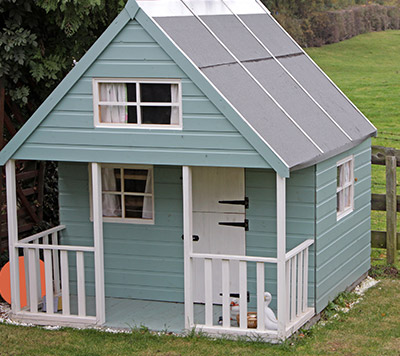• APRIL OFFERS with MASSIVE DISCOUNTS on POWER®, SHIRE™ and TGB™ • FREE ASSEMBLY on ALL TGB™ models inc. SUMMERHOUSES, PLAYHOUSES & SHEDS •

PLANNING
England
Under new regulations that came into effect on 1 October 2008, outbuildings are permitted development, not needing planning permission, subject to the following limits and conditions:
- No outbuilding on land forward of a wall forming the principal elevation.
- Outbuildings and garages to be a single storey with a maximum eaves height of 2.5m and a maximum overall height of 4.0m with a dual pitched (apex) roof or 3m for any other shelter.
- The maximum height of 2.5m in the case of a building, enclosure or container within 2m of a boundary of the curtilage of the dwelling-house.
- No verandas, balconies or raised platforms.
- Additions or other buildings would cover no more than half the area of land around the ‘original house.’
- In National Parks, the Broads, Areas of Outstanding Natural Beauty and World Heritage Sites the maximum area to be covered by buildings, enclosures, containers and pools more than 20m from house to be limited to 10m².
- On designated land, buildings, enclosures, containers and pools at the side of properties will require planning permission.
- Within the curtilage of listed buildings, any outbuilding will need planning permission.
You should always consult your local planning department or architectural service provider if you are unsure.
Wales
New regulations came into force on 30 September 2013 which changed the building work which can be done without needing to apply for planning permission. The Welsh Government has produced a technical guide, and a householder guide, available here, to help you understand how permitted development rules might apply to your circumstances. In general, outbuildings are permitted development, not needing planning permission, subject to the following limits and conditions:
- The total area of ground covered by outbuildings cannot exceed 50% of the entire area of the curtilage.
- Outbuildings cannot be in front of the building line of the principal elevation.
- Outbuildings cannot extend beyond the side elevation of the house when the development would be any closer to a highway than the existing home, or at least 5m from the highway, whichever is nearest.
- Any part of the development within 2m of a boundary of the house cannot exceed a height of 2.5 metres.
- Any part of the development within 2m of the house cannot exceed a height of 1.5 metres.
- Outbuildings cannot exceed more than one storey.
- The height of a shed cannot exceed 4m when the building has more than one pitch (e.g., dual pitch and hipped roofs).
- The height cannot exceed 3m when the building has a single pitch or other roof forms.
- Flat roof buildings cannot exceed 2.5m in height.
- Eaves height of the building cannot exceed 2.5m.
You should always consult your local planning department or architectural service provider if you are unsure.
Scotland
Planning permission is not required for a shed, garden room if you meet the following criteria:
- Your shed is located to the rear of the property (behind the front elevation or elevation that faces a road).
- The shed is not used as a bedroom.
- It does not exceed a total of 4m in height (3m to eaves).
- Any part of the building within 1m of the boundary does not exceed 2.5m in height.
- The building footprint is not more significant than 50% of the properties outside space.
- Is not in a conservation area (unless the area of the building is under 4m²).
- The construction is not within the boundary of a listed building.
- Your outhouse is not part of a flat, apartment, or tenement.
You might need other approvals before you can carry out work. For example, if you do not own the land on which the development is being carried out (for example, if you’re a tenant or the land’s in joint ownership), you need to get the landowner’s permission. If you live in a listed building you’ll also need to obtain listed building consent.
You should always consult your local planning department or architectural service provider if you are unsure.

Building Regulations ensure that the structure is safe and is constructed to a high standard. A building warrant won’t be required if the floor area of the outbuilding is less than 15m². If the floor area of the building is between 15m² and 30m², you won’t typically be required to apply for building regulations approval if the building is either at least one metre from any boundary, or if it is constructed of substantially non-combustible materials. In both cases, building regulations don’t apply ONLY if the building does not contain any sleeping accommodation. As always, A1 Sheds recommend that you check with your local authority.
Why choose us?

Professional Team

Efficient Delivery and Install

Wide Range of Sheds
Do you need advice for your outbuilding?
The professional team at A1 Sheds are always happy to help. With extensive experience, you can rely on us to offer invaluable advice when you need it.
